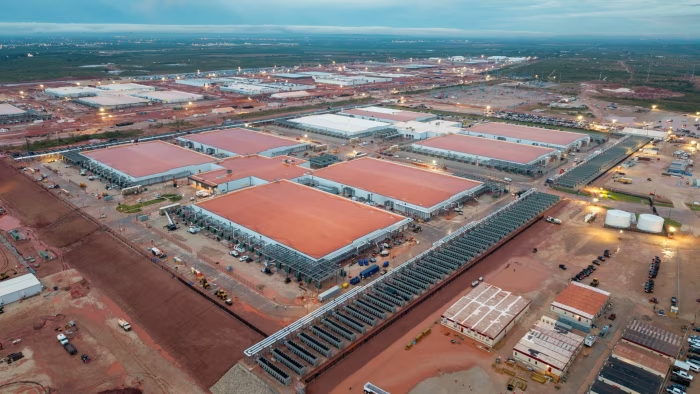The artificial intelligence landscape is undergoing a pivotal transformation marked by heightened financial complexity and risks, as revealed by recent trends in the tech sector. With increasing demands for generative AI capabilities, global capital expenditure on critical infrastructure—spanning chips, data centers, and cloud services—is set to balloon, projected to nearly reach $3 trillion by 2029, according to Morgan Stanley. While major tech players are currently at the forefront of this spending, the limitations of their cash flows from advertising and cloud services are leading them to explore more leveraged financing strategies.
In a striking example, Meta recently secured $29 billion in funding, including a significant $26 billion in debt, from private capital investors to support its data center expansions in Ohio and Louisiana. This shift toward debt is noteworthy, especially as financing flows towards non-investment-grade borrowers such as CoreWeave and OpenAI, as well as various smaller AI startups. The financing landscape is becoming increasingly interlinked, involving not just traditional financial entities, but also partnerships within the tech supply chain. OpenAI, for instance, has entered into agreements valued at over $1 trillion with leading firms such as Nvidia, Oracle, and AMD, some of which involve intricate financing arrangements.
Such financial maneuvers raise the stakes considerably, as the potential economic fallout from a failure in the generative AI field could be significant. Concerns have begun to shift from merely the stock market to the vulnerabilities created within the debt markets. Recent warnings from the IMF and Bank of England about tech valuations approaching levels seen during the dot-com bubble amplify fears of imminent corrections in the broader equity market. A sudden downturn could impact investment funds and retail portfolios alike, while the debt reliance from lesser-quality issuers introduces risks for banks and the non-bank financial sector. The interconnected nature of funding arrangements further escalates the risk of cascading failures.
The pressure is now on generative AI technologies to yield sufficient revenue to validate investments and repay owed debts. While ChatGPT has achieved a notable milestone of 800 million weekly active users, widespread business adoption is still unfolding. Should the anticipated enhancements to productivity lag, it could precipitate a pullback in investments and a rise in defaults. Compounding these risks are external factors such as rapid advancements in chip technology that could render existing data centers obsolete, along with challenges in accessing affordable electricity, which may threaten their viability.
Historically, overambitious expansions have sometimes resulted in beneficial infrastructure, reminiscent of the 19th-century railway boom or the excesses of the dot-com era. Should the anticipated surge in data center investments spiral beyond immediate needs, it could produce a surplus of computing power that fuels future innovations and growth. Nevertheless, the current situation indicates that investments in data centers are evolving beyond a straightforward bet on productivity; they are increasingly intertwined with financial stability.
As the spheres of credit, capital, and confidence grow more connected, a misstep could reverberate beyond just technology stocks. Ensuring that the burgeoning AI sector continues to develop responsibly will necessitate increased corporate discipline, rigorous investor scrutiny, and vigilant regulatory oversight. The path ahead will be critical not just for the technology sector but for the wider economy.







